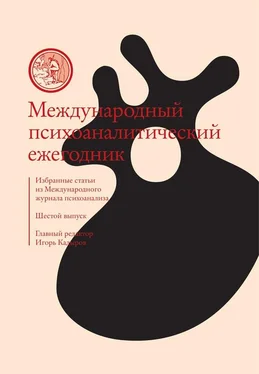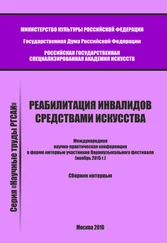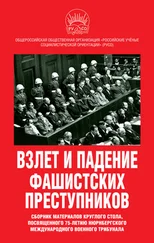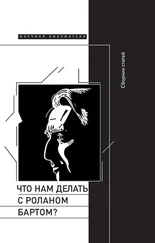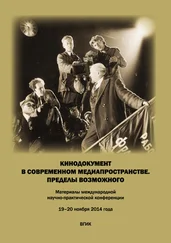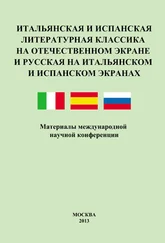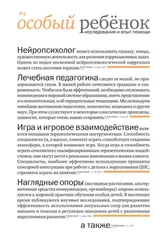Перевод Варвары Бабицкой
Библиография
Adler J.M., Chin E.D., Kolisetty A.P., Oltmanns T.F . (2012). The distinguishing characteristics of narrative identity in adults with features of borderline personality disorder. J Personal Disord 26:498–512.
Argelander H. (1970). Das Erstinterview in der Psychoanalyse [Initial Interview in psychotherapy]. Darmstadt: Wissenschaftliche Buchgesellschaft.
Argelander H . (1981). Was ist eine Deutung? [What is an Interpretation?]. Psyche 35:999 – 1005.
Aulagnier P. (1975). La violence de l’interpretation: Du pictogramme à l’énoncé [The violence of interpretations]. Paris: PUF.
Balint M . (1968). The basic fault: Therapeutic aspects of regression. London: Tavistock.
Baranger M., Baranger W . (2008). [1961–1962]). The analytic situation as dynamic field. Int J Psychoanal 89:795–826.
Bernfeld S.C. (1951). Freud and archeology. Am Imago 8:107–128.
Bion W.R. (1962). Learning from experience. London: Karnac.
Bohleber W . (2007). Remembrance, trauma and collective memory: The battle for memory in psychoanalysis. Int J Psychoanal 88:329–352.
Boston Change Process Study Group (2007). The foundational level of meaning: Implicit processes in relation to conflict, defense, and the dynamic unconscious. Int J Psychoanal 88:843–860.
Botella C. (2014). On remembering: The notion of memory without recollection. Int J Psychoanal 95.
Botella C., Botella S. (2001). La figurabilité psychique [Psychic figurability]. Paris: Delachaux et Niestlé.
Breuer J., Freud S. (1895). Studien über Hysterie. SE 2:48 – 305.
Bucci W . (1997). Psychoanalysis and cognitive science: A multiple code theory. New York, NY: Guilford.
Chused J.F. (1991). The evocative power of enactments. J Am Psychoanal Assoc 39:615–639.
Civitarese G. (2008). L’intima stanza: Teoria e tecnica del campo analitico [The intimate room]. Milano: Cortina.
Collins S. (2011). On authenticity: The question of truth in construction and autobiography. Int J Psychoanal 92:1391–1409.
Erikson E.H. (1968). Youth and crisis. New York, NY: Norton.
Ferro A . (1992). La tecnica nella psicanalisi infantile [The bipersonal field]. Milano: Cortina.
Ferro A . (1999). La psicanalisi come lettura e terapia [In the analyst’s consulting room]. Milano: Cortina.
Ferro A . (2002). Some implications of Bion’s thought. Int J Psychoanal 83:597–607.
Fivush R., Habermas T., Waters T., Zaman W . (2011). The making of autobiographical memory: Intersections of culture, narrative, and identity. Int J Psychol 46:321–345.
Fonagy P . (1999). Memory and therapeutic action. Int J Psychoanal 84:497–513.
Freud S . (1896). Weitere Bemerkungen über die Abwehr-Neuropsychosen. SE 3:162–185.
Freud S . (1899). Über Deckerinnerungen. SE 3:303–323.
Freud S . (1900). Die Traumdeutung. SE 4, 5.
Freud S. (1901). Zur Psychopathologie des Alltagslebens. SE 6.
Freud S . (1912). Ratschläge für den Arzt bei der psychoanalytischen Behandlung. SE 12:111–120.
Freud S . (1914). Erinnern, Wiederholen, Durcharbeiten. SE 12:147–156.
Freud S . (1918). Aus der Geschichte einer infantilen Neurose. SE 17:7 – 121.
Freud S . (1937). Konstruktionen in der Analyse. SE 23:257–269.
Grubrich-Simitis I. (2008). Realitätsprüfung an Stelle von Deutung. Eine Phase in der psychoanalytischen Arbeit mit Nachkommen von Holocaust-Überlebenden [Reality testing instead of interpretation: A phase in psychoanalytic work with children of Holocaust survivors]. Psyche 62:1091–1121.
Habermas T. (2011a). Identität und Lebensgeschichte heute – Die Form autobiographischen Erzählens [Identity and life story today: The form of autobiographical narrating]. Psyche 65:646–667.
Habermas T . (2011b). Autobiographical reasoning: Arguing and narrating from a biographical perspective // Habermas T., editor. The development of autobiographical reasoning in adolescence and beyond, vol. 131, 1 – 17. New Directions in Child and Adolescent Development. San Francisco: Jossey-Bass.
Habermas T . (2012). Identity, emotion, and the social matrix of autobiographical memory: A psychoanalytic narrative view // Berntsen D., Rubin D.C., editors. Understanding autobiographical memory: Theories and approaches, 33–53. Cambridge, UK: Cambridge University Press.
Habermas T., Negele A., Mayer B.F. (2010). «Honey, you’re jumping about» – Mothers’ scaffolding of their children’s and adolescents’ life narration. Cogn Dev 25:339–351.
Haubl R., Mertens W . (1996). Der Psychoanalytiker als Detektiv [The analyst as detective]. Stuttgart: Kohlhammer.
Heimann P . (1950). On countertransference. Int J Psychoanal 31:81–84.
Klein M. (1932). The psychoanalysis of children. London: Hogarth.
Laub D., Auerhahn N.C. (1989). Failed empathy: A central theme in the survivor’s holocaust experience. Psychoanal Psychol 8:377–400.
Leuzinger-Bohleber M . (2008). Biographical truths and their clinical consequences: Understanding «embodied memories» in a third psychoanalysis with a traumatized patient recovered from severe poliomyelitis. Int J Psychoanal 89:1165–1187.
Lothane H.Z. (2011). Dramatology vs. narratology: A new synthesis for psychiatry, psychoanalysis, and interpersonal drama therapy. Arch Psychiat Psychother 4:29–43.
Massie H., Szajnberg N . (2005). Lives across time: Growing up. Philadelphia, PA: Xlibris.
Mertens W., Haubl R. (1996). Der Psychoanalytiker als Archäologe [The analyst as archeologist]. Stuttgart: Kohlhammer.
Ogden T.H. (1994). The analytic third: Working with intersubjective reality. Int J Psychoanal 75:3 – 19.
Ogden T.H. (1997). Reverie and metaphor: Some thoughts on how I work as a psychoanalyst. Int J Psychoanal 78:719–732.
Racker H . (1953). A contribution to the problem of countertransference. Int J Psychoanal 34:313–324.
Reich W . (1926). Zur Technik der Deutung und der Widerstandsanalyse [On the technique of interpretation and analysis of resistance]. Int J Psychoanal 8:142 – 59.
Renik O. (2006). Practical psychoanalysis for therapists and patients. New York, NY: Other Press.
Schafer R. (1983). The analytic attitude. New York, NY: Norton.
Singer J.A., Conway M.A. (2011). Reconsidering therapeutic action: Loewald, cognitive neuroscience, and the integration of memory’s duality. Int J Psychoanal 92:1183–1207.
Singer J.A., Salovey C.P . (1993). The remembered self: Emotion and memory in personality. New York, NY: Free Press.
Spence D.P. (1982). Narrative truth and historical truth. New York, NY: Norton.
Spurling S . (2008). Is there still a place for «therapeutic regression» in psychoanalysis? Int J Psychoanal 89:523–540.
Sullivan H.S . (1952). The psychiatric interview. New York, NY: Norton.
Winnicott D.W . (1955). Metapsychological and clinical aspects of regression within the psychoanalytic set-up. Int J Psychoanal 36:16–26.
Читать дальше
Конец ознакомительного отрывка
Купить книгу
